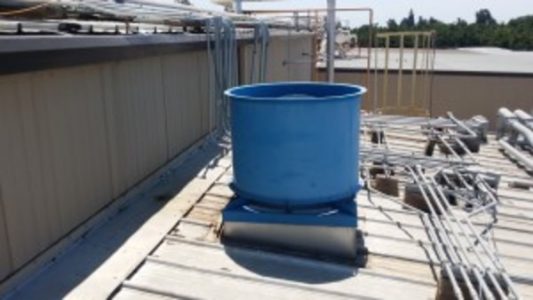RAGAGEP: Historical Variants and the Importance of IIAR Standards | Part 7: Machinery Room Ventilation

Uriah Donaldson, OHST, presented a technical paper at the 2019 RETA National Conference and 2021 IIAR National Conference titled RAGAGEP: Historical Variants and the Importance of IIAR Standards.
This is the seventh post in a series of blogs which include excerpts from his technical paper.
Machinery Room Ventilation
As was highlighted in the previous section, mechanical ventilation for ammonia machinery rooms has been part of IIAR 2 since its publication as an ANSI standard in the early 1970s. Unlike detection systems however, ventilation has also been part of the major code documents since the 1970s. For the purposes of this study, two RAGAGEP variants will be reviewed: the sizing of ventilation fans and the types of fans.
Sizing of Fans for Emergency Ventilation
In 1970 the Uniform Mechanical Code required machinery rooms to be equipped with “an exhaust system of ventilation arranged to provide a complete change of air in such a room at least once every five minutes and discharge to the outside air at a location not less than 20 feet from any exterior door, window or ventilation inlet in any building.”[1] The major idea here is that fans sized according to the Uniform Mechanical Code from this time must have had the capacity to perform “a complete change of air… once every five minutes” (i.e., 12 air changes per hour).
In 1989 ASHRAE updated its Safety Code for Mechanical Refrigeration and published a new equation for sizing fans for emergency ventilation:[2]
Q = 100 x √G
Where:
Q = the air flow in cubic feet per minute
G = the mass of refrigerant in pounds in the largest system, any part of which is located in the machinery room
This equation became the reigning standard used to size ventilation fans for nearly two decades and was subsequently adopted by the Uniform Mechanical Code in 1994, IIAR in 1999, and the International Mechanical Code in 2000.[3]
In 2010, IIAR changed the landscape once again by requiring 30 air changes per hour (ACH) as the new standard for sizing emergency ventilation fans.[4] This new requirement would be adopted by both the International and Uniform Mechanical Codes in 2012 and as such remains the accepted standard for sizing emergency ventilation fans today in the ammonia industry.[5]
Type of Fan
Another pertinent question regarding machinery room ventilation is the type of discharge. In 2002 IIAR published a guideline for Ammonia Machinery Room Ventilation which recommended consideration be given to “up-blast, high velocity” fans.[6] This recommendation would become incorporated into IIAR’s standard for design in 2010 as part of IIAR 2-2008, Addendum A, and therefore, emergency ventilation fans installed post-2010 must be of the up-blast type with a minimum discharge velocity of 2500 ft./min. (FPM).[7]
[1] 1970 UMC §1508 Machinery Room Ventilation
[2] ANSI/ASHRAE 15-1989 §10.13.6.2
[3] 1994 UMC §1107.2(4); ANSI/IIAR 2-1999 §6.2.3.3; 2000 IMC §1105.6.4
[4] ANSI/IIAR 2-2008 Addendum A §13.3.9.1
[5] 2012 UMC §1108.2(2); 2012 IMC §1105.6.3
[6] IIAR Bulletin 111 §3.3.1 Fan Type
[7] ANSI/IIAR 2-2008 Addendum A §13.3.7.1
The previous blogs are available in the following links:
- Part 1: Introduction
- Part 2: Defining RAGAGEP and Historical Perspectives
- Part 3: The IIAR’s Vision for the Future
- Part 4: Emergency Shutdown Controls
- Part 5: Ammonia Discharge Termination
- Part 6: Ammonia Detection & Ventilation Control

Leave a Reply